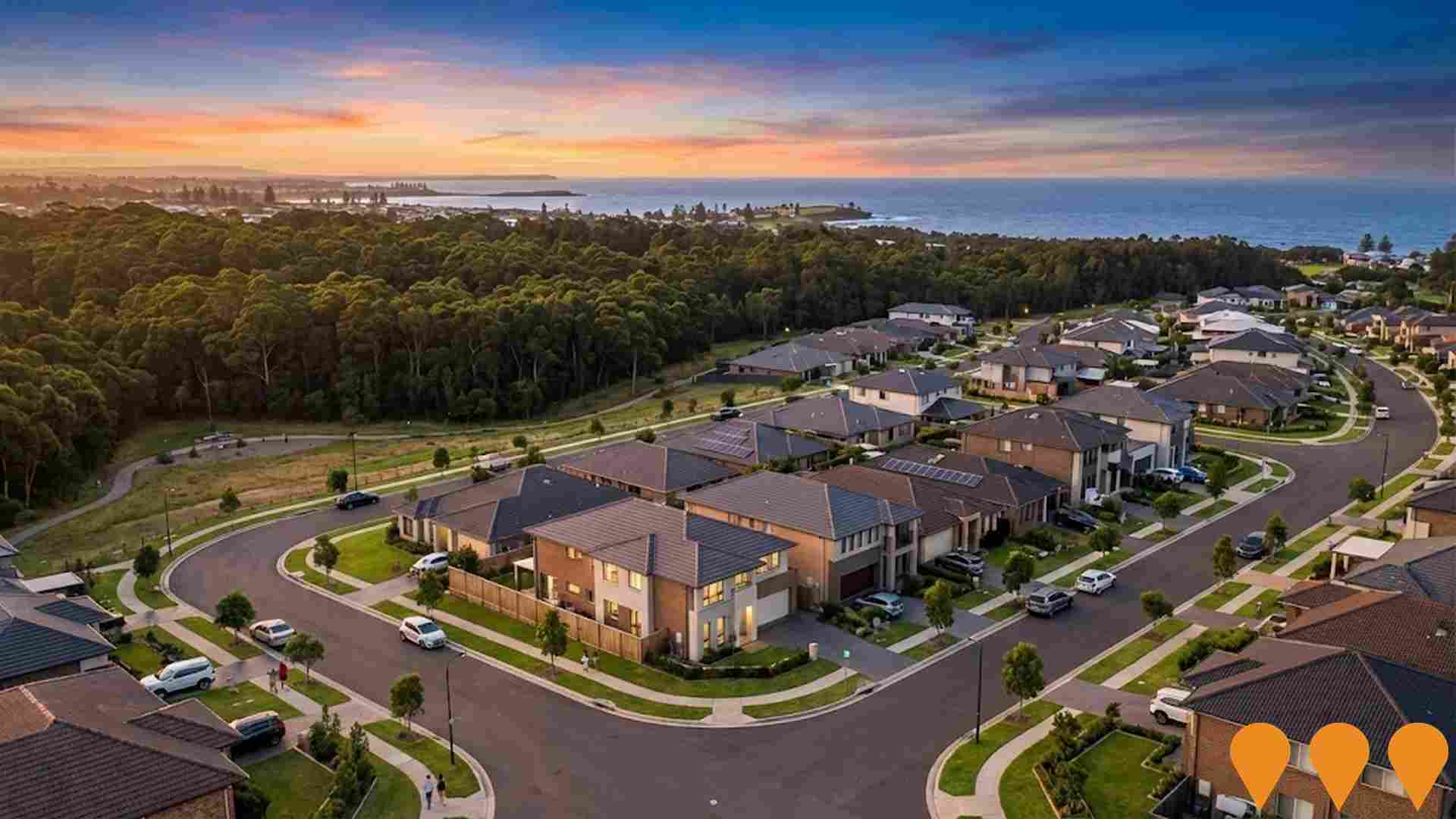Chart Color Schemes
est. as @ -- *
ABS ERP | -- people | --
2021 Census | -- people
Sales Activity
Curious about local property values? Filter the chart to assess the volume and appreciation (including resales) trends and regional comparisons, or scroll to the map below view this information at an individual property level.
Find a Recent Sale
Sales Detail
Population
Warilla has shown very soft population growth performance across periods assessed by AreaSearch
Warilla's population is around 20,613 as of Aug 2025. This reflects an increase of 216 people since the 2021 Census, which reported a population of 20,397 people. The change is inferred from the estimated resident population of 20,592 in June 2024 and an additional 139 validated new addresses since the Census date. This level of population equates to a density ratio of 2,172 persons per square kilometer, above the average seen across national locations assessed by AreaSearch. Population growth was primarily driven by overseas migration contributing approximately 56.6% of overall population gains during recent periods.
AreaSearch is adopting ABS/Geoscience Australia projections for each SA2 area, released in 2024 with a base year of 2022. For areas not covered, AreaSearch utilises NSW State Government's SA2 level projections, released in 2022 with a base year of 2021. Growth rates by age group are applied to all areas for years 2032 to 2041. Projections indicate an overall population decline by 166 persons by 2041. However, specific age cohorts are expected to grow, notably the 25 to 34 age group projected to increase by 512 people.
Frequently Asked Questions - Population
Development
AreaSearch analysis of residential development drivers sees Warilla recording a relatively average level of approval activity when compared to local markets analysed countrywide
Warilla has seen approximately 81 new homes approved annually over the past five financial years, totalling 406 homes. As of FY26, 32 approvals have been recorded. The population has fallen during this period, suggesting that new supply has likely kept pace with demand, providing good choices for buyers. New properties are constructed at an average value of $386,000, which is below regional levels, indicating more affordable housing options.
In FY26, $5.7 million in commercial approvals have been registered, suggesting limited focus on commercial development. Compared to the Rest of NSW, Warilla shows significantly reduced construction activity (56.0% below the regional average per person), which generally supports stronger demand and values for established properties. New building activity comprises 26.0% detached houses and 74.0% townhouses or apartments, indicating a shift towards compact living that offers affordable entry pathways and attracts downsizers, investors, and first-time purchasers. This represents a notable change from the area's existing housing composition, which is currently 78.0% houses. The location has approximately 246 people per dwelling approval, indicating a low density market. Given stable or declining population forecasts, Warilla may experience less housing pressure in the future, creating favourable conditions for buyers.
Given stable or declining population forecasts, Warilla may experience less housing pressure, creating favourable conditions for buyers.
Frequently Asked Questions - Development
Infrastructure
Warilla has strong levels of nearby infrastructure activity, ranking in the top 40% nationally
Changes in local infrastructure significantly affect an area's performance. AreaSearch has identified 13 projects that could impact the region. Notable initiatives include Warilla Beach Seawall Renewal, Playground Renewals & Upgrades Program (Jilba Park, Collins Reserve), The Waterfront Shell Cove, and The Links Hotel. Below is a list of projects likely to be most relevant.
Professional plan users can use the search below to filter and access additional projects.
INFRASTRUCTURE SEARCH
 Denotes AI-based impression for illustrative purposes only, not to be taken as definitive under any circumstances. Please follow links and conduct other investigations from the project's source for actual imagery. Developers and project owners wishing us to use original imagery please Contact Us and we will do so.
Denotes AI-based impression for illustrative purposes only, not to be taken as definitive under any circumstances. Please follow links and conduct other investigations from the project's source for actual imagery. Developers and project owners wishing us to use original imagery please Contact Us and we will do so.
Frequently Asked Questions - Infrastructure
New Shellharbour Hospital and Integrated Services
A $780+ million redevelopment delivering a new multi-storey Shellharbour Hospital at Dunmore with expanded emergency department, specialist elective surgery theatres, paediatrics, mental health inpatient unit, rehabilitation and aged care services, renal dialysis, oncology, ambulatory care and outpatients. The project also includes a new Warrawong Community Health Centre and upgrades to Bulli and Wollongong hospitals. Main construction works are well underway with practical completion expected in late 2027.

Shellharbour City Centre Masterplan
The Shellharbour City Centre Masterplan is a long-term plan aimed at creating a vibrant heart, resilient economy, and improved regional employment. It seeks to increase development opportunities in the Shellharbour CBD, deliver quality community spaces, and incorporate a mix of retail, entertainment, commercial, and residential developments. The plan includes government-owned land such as the site of the current Shellharbour Hospital (to be decommissioned upon completion of the new hospital in 2027), adjoining TAFE, and NSW Land and Housing properties, as well as privately-owned land. The masterplan is being progressed to unlock the city centre's potential as the economic, cultural, and social heart of the city.
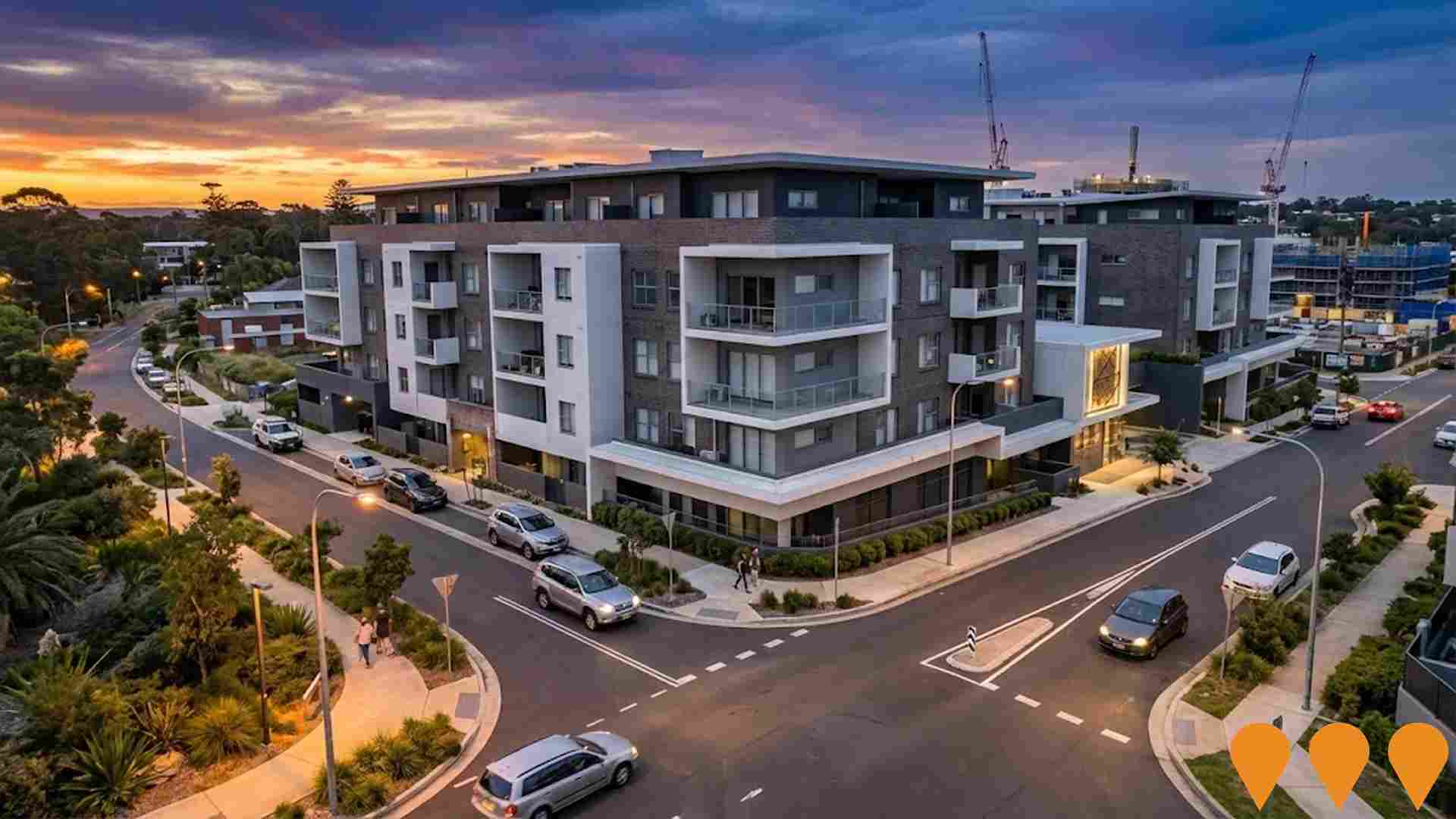
The Waterfront Shell Cove
The Waterfront Shell Cove is a $2.1 billion master-planned coastal community by Frasers Property Australia in partnership with Shellharbour City Council. Key features include Australia's first man-made ocean harbour in over 100 years with a 270-berth Shellharbour Marina, over 3,000 homes and apartments (up to ~3,250), a vibrant town centre with Woolworths, specialty retail, dining precinct, tavern, library and community facilities (some on hold), Crowne Plaza hotel (opening 2025), extensive parklands, playgrounds, 2.5km of boardwalks and promenades. Recent milestones include Vela Apartments topping out (move-ins late 2026) and winning 'Best Regional Project' at the 2025 Australian Apartment Awards.
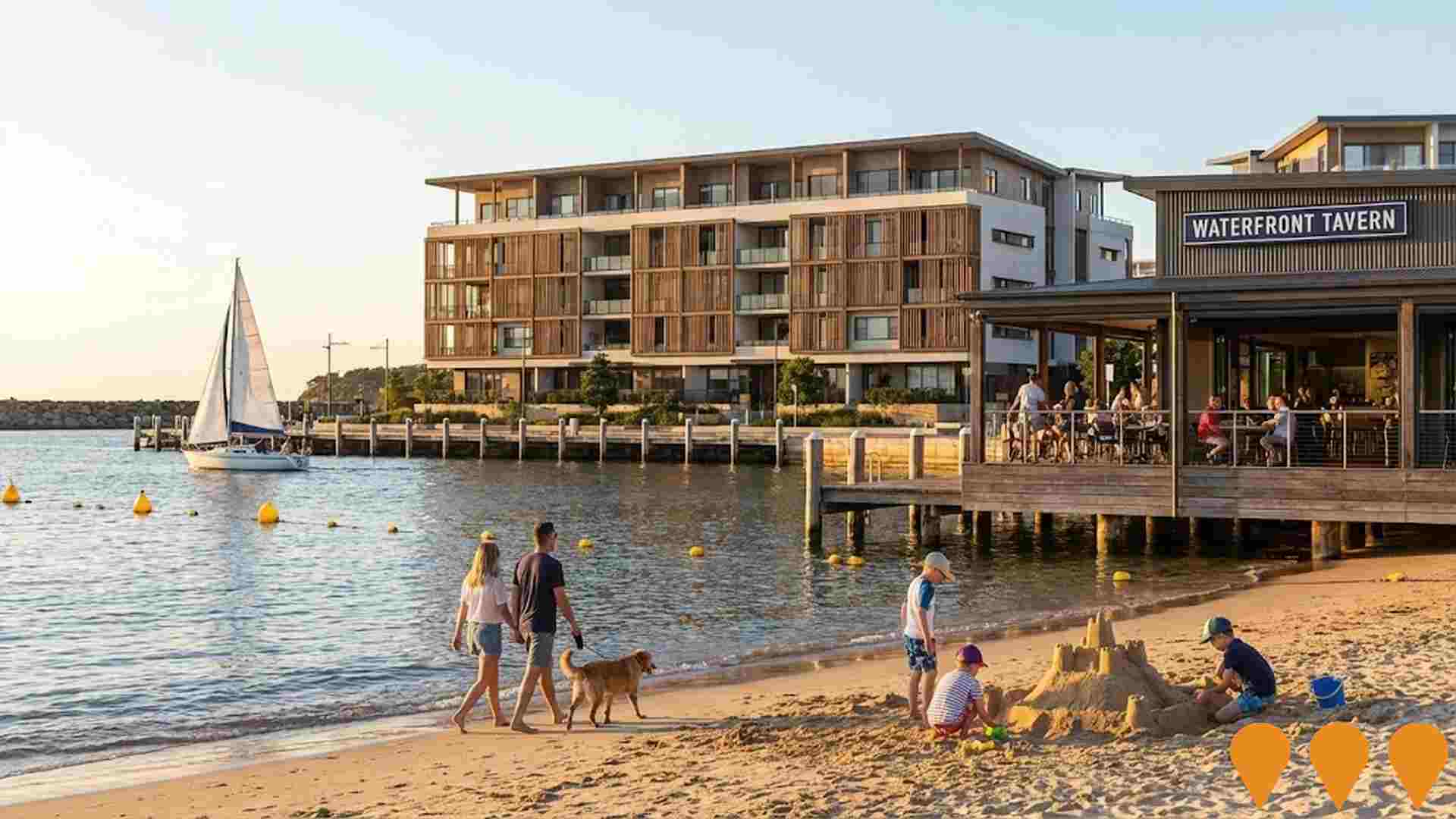
Performing Arts, Convention and Cultural Centre
Development of a state-of-the-art facility in Shellharbour Village planned as a regional creative hub. The facility is intended to be a distinctive landmark focusing on integrated technology for a modern, innovative experience, offering affordable and accessible creative spaces for emerging and established artists. It aims to enrich the community's cultural life, support convention activities, and promote Shellharbour Village as a tourist destination. The project is currently being advocated for by Shellharbour City Council as a priority project.
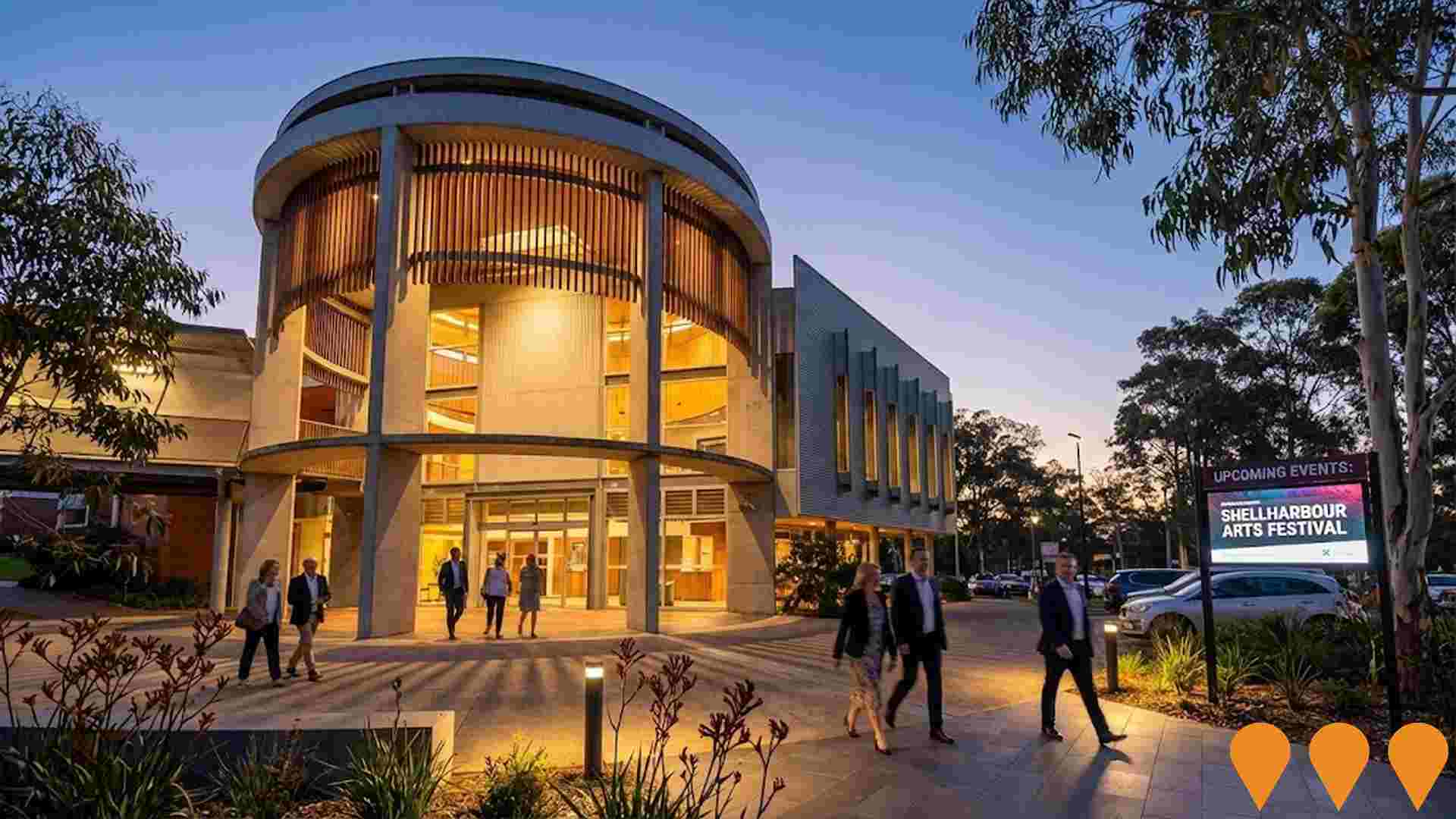
Shellharbour Mobile Tiny Homes Pilot Program
State-first two-year pilot program allowing mobile tiny homes on existing residential properties without development applications. Council approved September 23, 2025. Planning Proposal to amend Shellharbour LEP 2013 requires NSW Government approval and 28-day public consultation (up to 6 months process). Program provides affordable rental housing through moveable dwellings on trailers registered under Road Transport Act 2013, subject to strict conditions including minimum setbacks, connection to essential services, and fire safety compliance. Addresses housing crisis where median house price is $1 million.

Blackbutt Dam Modification
Modifications to Blackbutt Dam by Shellharbour City Council, including lowering the water level, reconstructing the embankment and spillway, and site restoration. The project was undertaken to improve safety, meet compliance requirements from Dams Safety NSW, and resulted in the dam being de-prescribed as a declared dam in 2022. Final landscaping works were scheduled for Spring 2022.
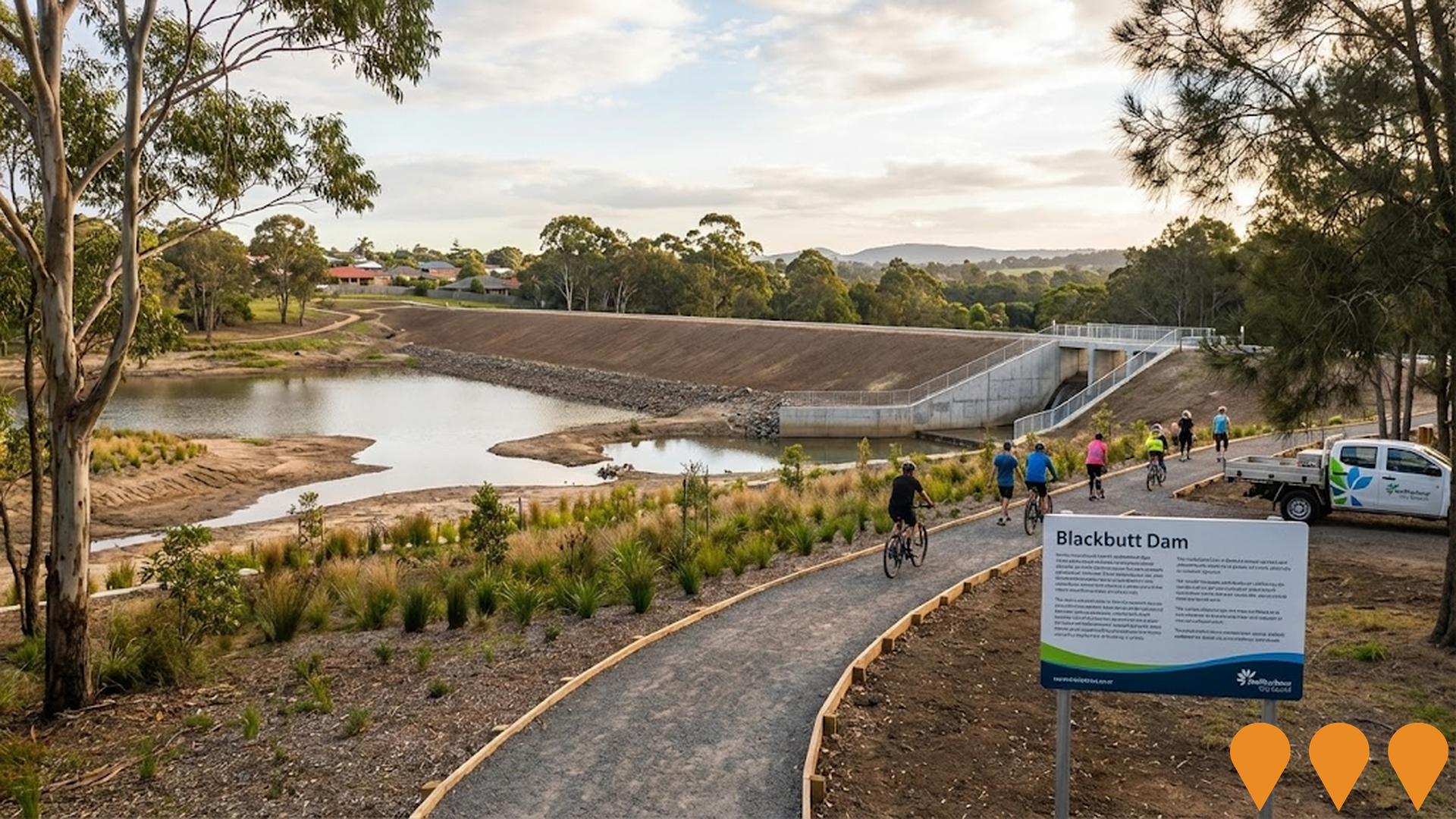
Warilla Beach Seawall Renewal
Rebuilding a 930-meter seawall to modern engineering standards to address coastal erosion and public safety, including improved beach access and landscaping.
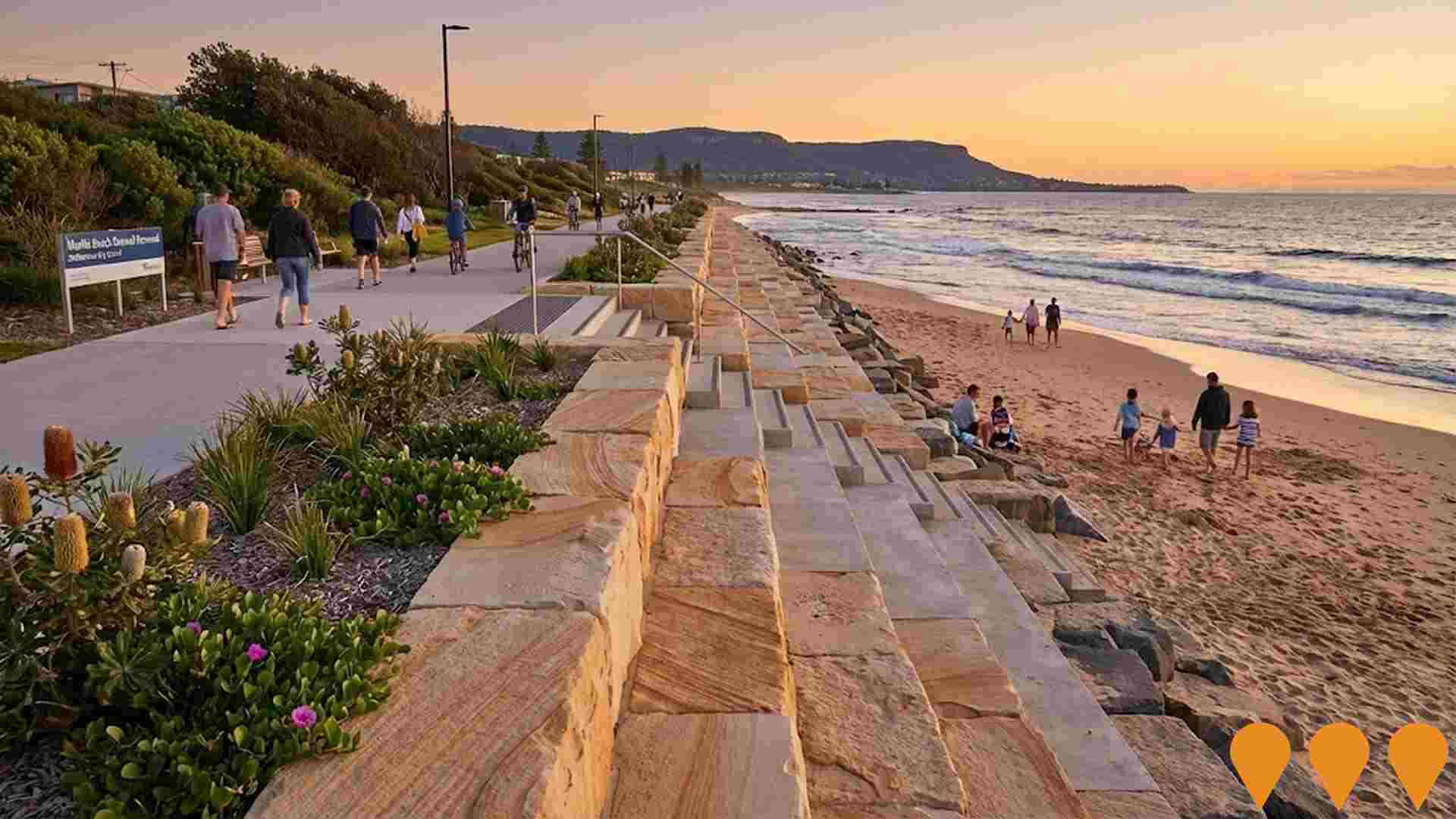
Albion Park Quarry Extraction Area Stage 7 Extension
A 30-year extension of the existing Albion Park Quarry extraction area, approved to secure approximately 33 million tonnes of hard rock resources for the Illawarra and Greater Sydney regions, ensuring continued supply for the construction industry. The project includes demolition of Belmont House and associated archaeological work, and construction of amenity barriers and tree screens.

Employment
Employment conditions in Warilla face significant challenges, ranking among the bottom 10% of areas assessed nationally
Warilla has a diverse workforce with both white and blue collar jobs, prominent in essential services. The unemployment rate stood at 13.1% as of June 2025, with an estimated employment growth of 1.2% over the past year.
Residents in work totaled 7,936, while the unemployment rate was 9.4% higher than Rest of NSW's rate of 3.7%. Workforce participation lagged at 48.5%, compared to Rest of NSW's 56.4%. Key employment industries were health care & social assistance, construction, and retail trade. Construction stood out with an employment share 1.4 times the regional level, while agriculture, forestry & fishing had limited presence at 0.3% compared to 5.3% regionally.
Employment opportunities locally appeared limited, as indicated by Census data on working population vs resident population. Over a 12-month period ending June 2025, employment increased by 1.2%, labour force by 0.8%, reducing the unemployment rate by 0.4 percentage points. In contrast, Rest of NSW saw employment fall by 0.1%, labour force expand by 0.3%, and unemployment rise by 0.4 percentage points. Jobs and Skills Australia's national employment forecasts from May 2025 project overall growth of 6.6% over five years and 13.7% over ten years. Applying these projections to Warilla's employment mix suggests local growth of approximately 6.5%% over five years and 13.6% over ten years, though this is a simplified extrapolation for illustrative purposes only.
Frequently Asked Questions - Employment
Income
Income figures position the area below 75% of locations analysed nationally by AreaSearch
Warilla's median income among taxpayers was $48,348 in financial year 2022. The average income stood at $59,295 during the same period. These figures compare to Rest of NSW's median and average incomes of $49,459 and $62,998 respectively. Based on Wage Price Index growth of 12.61% since financial year 2022, estimated median and average incomes for Warilla as of September 2025 are approximately $54,445 and $66,772 respectively. According to census data, household, family, and personal incomes in Warilla all fall between the 10th and 13th percentiles nationally. The earnings profile shows that 27.9% of Warilla's community (5,751 individuals) earn within the $1,500 - $2,999 range, similar to metropolitan regions where 29.9% occupy this earnings band. Housing affordability pressures are severe in Warilla, with only 79.8% of income remaining after housing costs, ranking at the 11th percentile nationally.
Frequently Asked Questions - Income
Housing
Warilla is characterized by a predominantly suburban housing profile, with a higher proportion of rental properties than the broader region
Warilla's dwelling structure, as per the latest Census, consisted of 78.3% houses and 21.7% other dwellings (semi-detached, apartments, 'other' dwellings). This compares to Non-Metro NSW's 79.0% houses and 21.0% other dwellings. Home ownership in Warilla was 36.4%, with mortgaged dwellings at 25.9% and rented ones at 37.7%. The median monthly mortgage repayment in the area was $1,820, lower than Non-Metro NSW's average of $2,167. The median weekly rent figure was recorded as $350, compared to Non-Metro NSW's $430. Nationally, Warilla's mortgage repayments were below the Australian average of $1,863, and rents were less than the national figure of $375.
Frequently Asked Questions - Housing
Household Composition
Warilla has a typical household mix, with a lower-than-average median household size
Family households account for 68.3% of all households, including 23.6% couples with children, 25.7% couples without children, and 17.9% single parent families. Non-family households constitute the remaining 31.7%, with lone person households at 29.2% and group households comprising 2.5%. The median household size is 2.4 people, which is smaller than the Rest of NSW average of 2.6.
Frequently Asked Questions - Households
Local Schools & Education
Warilla faces educational challenges, with performance metrics placing it in the bottom quartile of areas assessed nationally
The area has university qualification rates of 11.3%, significantly lower than the NSW average of 32.2%. This presents both a challenge and an opportunity for targeted educational initiatives. Bachelor degrees are the most common at 8.1%, followed by postgraduate qualifications (1.9%) and graduate diplomas (1.3%). Trade and technical skills are prominent, with 41.6% of residents aged 15+ holding vocational credentials - advanced diplomas (9.5%) and certificates (32.1%).
Educational participation is high at 27.1%, including 10.1% in primary education, 7.6% in secondary education, and 2.5% pursuing tertiary education. Warilla has a robust network of 9 schools educating approximately 2,688 students. The educational mix includes 6 primary, 2 secondary, and 1 K-12 school. Note: where schools show 'n/a' for enrolments please refer to parent campus.
Frequently Asked Questions - Education
Schools Detail
Nearby Services & Amenities
Transport
Transport servicing is moderate compared to other areas nationally based on assessment of service frequency, route connectivity and accessibility
Warilla has 181 active public transport stops, all of which are bus stops. These stops are served by 48 different routes that together provide 892 weekly passenger trips. The accessibility of these services is rated as excellent, with residents on average located just 124 meters from the nearest stop.
On average, there are 127 trips per day across all routes, which equates to about four weekly trips per individual stop.
Frequently Asked Questions - Transport
Transport Stops Detail
Health
Health performance in Warilla is well below average with prevalence of common health conditions notable across both younger and older age cohorts
Warilla faces significant health challenges, as indicated by its health data. Both younger and older age groups have notable prevalence of common health conditions. Approximately 49% of Warilla's total population (~10,120 people) has private health cover, which is lower than the Rest of NSW average of 52.7%, and below the national average of 55.3%.
The most prevalent medical conditions in Warilla are arthritis (affecting 11.5% of residents) and mental health issues (impacting 10.5%). Conversely, 59.8% of residents report having no medical ailments, compared to 65.2% across the Rest of NSW. Warilla has a higher proportion of seniors aged 65 and over, with 23.1% (4,759 people), compared to the Rest of NSW average of 20.9%. The health outcomes among seniors in Warilla are broadly similar to those of the general population.
Frequently Asked Questions - Health
Cultural Diversity
In terms of cultural diversity, Warilla records figures broadly comparable to the national average, as found in AreaSearch's assessment of a number of language and cultural background related metrics
Warilla's cultural diversity aligns with its wider region, with 80.7% born in Australia, 88.8% being citizens, and 88.6% speaking English only at home. Christianity is the dominant religion in Warilla at 56.5%, slightly lower than the Rest of NSW's 57.3%. The top three ancestry groups are English (28.3%), Australian (28.0%), and Scottish (6.4%).
Notably, Spanish (1.3%) and Macedonian (2.1%) ethnicities are more prevalent in Warilla compared to regional averages of 1.0% and 1.9%, respectively. Serbian ethnicity is also slightly higher at 0.7%.
Frequently Asked Questions - Diversity
Age
Warilla hosts an older demographic, ranking in the top quartile nationwide
Warilla's median age is 42 years, similar to Rest of NSW's average of 43 but older than Australia's median age of 38 years. The age profile shows that individuals aged 25-34 are prominently represented at 12.5%, while those aged 45-54 comprise a smaller proportion at 10.8% compared to Rest of NSW. Between 2021 and the present, the percentage of Warilla's population aged 25-34 has increased from 11.6% to 12.5%. Conversely, the proportion of individuals aged 45-54 has decreased from 12.1% to 10.8%, and those aged 55-64 have dropped from 13.6% to 12.5%. Population forecasts for 2041 indicate significant demographic changes in Warilla, with the strongest projected growth occurring among individuals aged 25-34, who are expected to increase by 17%, adding 440 residents to reach a total of 3,009. In contrast, population declines are projected for those aged 45-54 and 65-74.


